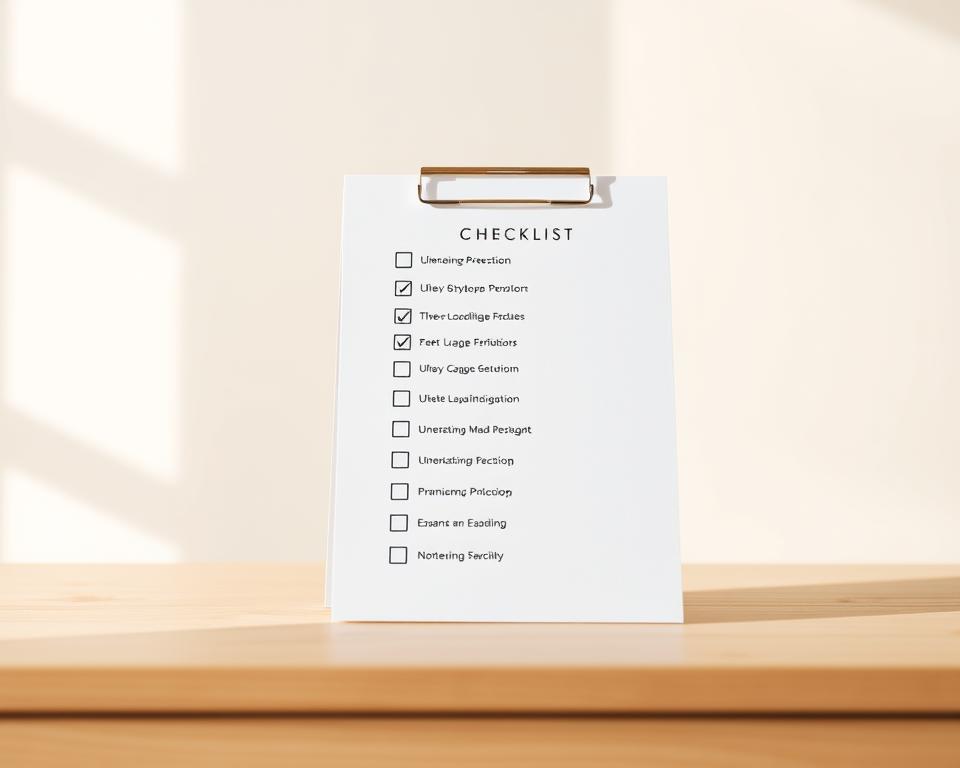Anúncios
Have you ever wondered which moves really matter for your company when markets shift? This guide explains why 2025 demands fast adaptation and clear choices. You’ll get practical actions you can try today, not promises of instant results.
Nearly half of small business leaders expect economic uncertainty and harder customer acquisition, and data show many firms don’t make five years. Brands like Allbirds, Equator Coffee, Stoked Oats, Kloo, Bandit, Sugardoh, The Body Deli and Mooncat offer real playbooks you can study.
This long-form article helps you prioritize the few things that drive growth. You’ll learn organization, planning, niche and brand work, customer insight, content and email, social presence, UX and payments, automation, cash flow, product moves, partnerships and measurement.
Use these ideas as a framework: test, measure, and adapt to your context. Pick two or three priorities to act on, keep notes, and focus on steady execution. Ethical, safe practices and consistent work are the real path to sustained momentum.
Introduction: Business tips you can apply in 2025
You’ll need faster learning cycles in 2025 as customer habits and acquisition costs change quickly. Economic shifts mean you can’t rely on old playbooks. LocaliQ finds 48% of small businesses expect uncertainty and 45% foresee tougher customer acquisition.
Anúncios
Pew Research shows 76% of Americans have bought on mobile, so design for phones first. Accelerated checkouts like Shop Pay can lift conversion by up to 50% versus guest checkout and improve conversion over other fast options by at least 10%.
Why adaptation beats old playbooks
Research and BLS survival data underline the value of disciplined iteration and risk management. Adaptation ties to practical levers: positioning, marketing channels, and consistent brand signals aimed at your audience.
Anúncios
How to use this guide responsibly
Treat strategies as guidance: results depend on your audience and execution. Pick sections that matter to you, run small tests, measure monthly, and log outcomes on a one-page plan.
- Prioritize ethical marketing, data privacy, and accessibility to build trust.
- Focus on mobile-first flows and accelerated checkout to cut friction.
- Use feedback from people in your audience to refine offers and messaging.
Measure, adapt, and consult experts when needed. Consistent execution across marketing and service compounds over time.
Get organized from day one
Getting organized on day one saves you hours and keeps small teams from spinning their wheels. Start with simple systems that you can improve as you grow. Use easy tools first and avoid adding software until it clearly helps.
Simple systems: to-do lists, Kanban, and shared docs
Pick a single source of truth. Keep a weekly list that maps priorities to outcomes so your time focuses on high-impact things. Use a Kanban board (Trello or Microsoft Planner) to see work in progress and limit multitasking.
Centralize procedures and templates in Notion, Google Drive, or Airtable. Define a short meeting cadence and rely on asynchronous updates to protect focused work.
Recommended tools for small businesses
- Task & boards: Trello or Planner to visualize flow and reduce overload.
- Shared docs: Notion or Google Drive for templates, notes, and onboarding checklists.
- Scheduling & meetings: Calendly for bookings and Zoom or Google Meet for virtual touchpoints.
- Start with Excel if you need a lightweight list before adopting heavier software.
Track weekly: log completed tasks and cycle time, document decisions, and keep a simple checklist for recurring processes. These steps help any owner find bottlenecks and protect valuable time.
Keep detailed, dual-location records
Accurate records and layered backups keep your operations running after the unexpected.
Cloud plus physical backups reduce operational risk
Successful business owners watch their books closely so they spot problems early. Keeping records in two places — a cloud system and an off-site physical copy — protects you from fire, malware, or accidental deletion.
Use role-based access to protect sensitive customer and company files. Reconcile accounts monthly and write down any variances so you can act fast.
As an example, archive core financial statements quarterly in your accounting system and on a secure external drive. Test your backup restore process at least twice a year; a backup is only useful if you can recover it quickly.
- Maintain accurate accounting, tax, and compliance records to understand cash needs.
- Store invoices, receipts, and contracts in the cloud with version control and keep essential physical copies off-site.
- Create a retention policy with named owners and a change log for continuity.
Consider affordable options like QuickBooks, Xero, or Wave and pick what integrates with your bank and workflow. These simple choices give you practical ways to cut risk and keep operations stable.
Clarify goals and build a practical business plan
Start with a one-page plan that ties weekly milestones to quarterly outcomes. Keep it simple so you can test, measure, and adapt without wasting capital.
Short-term milestones tied to long-term outcomes
Translate your vision into clear targets. Set quarterly goals and weekly tasks that map to customer outcomes, like trial-to-paid conversion rates.
Focus on measures that matter instead of vanity metrics. Review plan versus actuals monthly and update forecasts based on what you learn.
Budgeting startup and hidden costs
List fixed costs (rent, tools, insurance) and variable costs (COGS, shipping, ads) so you see how revenue funds operations. Include hidden items: licenses, returns, chargebacks, and professional fees to avoid surprises.
- Build a simple break-even model: units × margin should cover operating costs plus a buffer.
- Allocate capital to must-haves first; stage nice-to-haves after proof of demand.
- Document assumptions and block regular time as an owner for planning and retrospectives.
Use this plan as a living tool to protect money and guide growth. Discipline and clear tracking improve your chances of long-term success.
Analyze your competition with intent
Start competitor research with a clear scope: name the rivals that solve the same customer job, not just those listed under a category. This focus helps you spot where real battles for attention and dollars happen.
What to evaluate and where to find signals.
Visit competitor sites and signup flows. Read trade publications and hiring pages. Scan reviews, FAQs, and social feeds to infer strategy. Public filings and press releases reveal pricing ranges, partnerships, and product momentum.
Use a simple checklist to compare rivals on positioning, pricing tiers, promotions, distribution, and service SLAs. Track messaging frameworks to see what each company claims as its edge.
- Define your competitive set by market and job-to-be-done.
- Capture a weekly example teardown: homepage, onboarding, checkout, and support.
- Talk to customers who weighed multiple businesses to learn decisive factors.
- Monitor share-of-voice and feature launches to spot shifts early.
Use findings to refine your offer, not to copy. Reassess quarterly so your view stays current and you can act on real signals instead of assumptions.
Find your niche and define your brand
A clear niche makes marketing simpler and wins trust before you meet buyers. Focus on the job you solve and the people who most need it. This narrows choices and helps you spend time where returns are higher.
Right-sized niches that sustain growth
Choose a niche that is specific enough to cut through noise but large enough to sustain growth. Test demand with one or two pilot projects, then measure conversion and referrals. As an example, a web design firm that targets hospitality finds more relevant leads than a generic agency.
Mission, name, logo: keep it clear and consistent
Draft a simple mission that states the change you deliver for customers in that market. Pick a pronounceable name and confirm domain plus social handle availability early to avoid rebrands.
- Create a basic visual identity—logo, colors, and type—and a short voice guide to keep messages consistent.
- Use a focused services page to reinforce your niche and avoid scope creep.
- As the owner, socialize the mission so every touchpoint reinforces your brand, and audit assets quarterly.
Know your customer and where they spend time
The fastest way to learn about your customers is to ask three real buyers what drove their last purchase. Start with short interviews to capture pains, objections, and purchase triggers.
Personas, pains, and purchase drivers
Build lightweight personas from actual conversations, not assumptions. Capture four fields: pains, needs, desires, and buying triggers.
Keep each persona one page so you can share it with the team and iterate fast.
- Identify audience overlap across personas to focus where reach and intent align.
- Map content to customer jobs and moments across the journey.
- Revisit personas quarterly as you learn from real behavior.
Choosing the few channels that matter
Prioritize 2–4 channels where your customer already researches or hangs out. Examples: LinkedIn, Facebook groups, Reddit, and industry events.
Use social media listening and community participation to shape offers. Keep a simple channel scorecard: reach, intent, cost, learning.
Validate assumptions with small tests and iterate quickly. Align your brand tone to each channel, but keep core messages consistent. Depth beats breadth—limit active media to what you can support well.
Content and email that compound results
Create one deep resource per core problem and use it as the engine for repeated reach. That single guide can attract search traffic and feed your outreach so you don’t chase new ideas every week.
Pillar content you can repurpose
Pick 3–5 pillar topics tied to real customer pains. Build thorough guides that answer the main questions and include practical examples, step lists, and CTAs to test.
- Write one large article and break it into short posts, carousels, videos, and social threads.
- Reuse examples and screenshots as standalone assets for weeks of promotion.
- Keep each pillar evergreen so you can update data and republish with minimal effort.
List building and value-led email cadence
Offer a clear lead magnet aligned to a pillar to grow a qualified list. Start with a welcome series, follow with a weekly value email, and add occasional offers tied to launches.
Segment by behavior so messages match interest and protect attention. Test subject lines, CTAs, and send times to improve opens, clicks, and downstream sales. Shopify Email can simplify creation and tracking.
Measure what matters: track assisted revenue and contribution to pipeline, not only opens. The Body Deli scaled its six-figure list by focusing on value and a steady cadence—no aggressive pitches.
Keep it simple: clean design, mobile-friendly copy, and regular list hygiene. Test formats and CTAs, measure results, and iterate until the sequence fuels reliable pipeline growth.
Social media, community, and networking
Show up where your audience already gathers, and focus on listening before you ever pitch an idea. Building trust in communities takes time, but it pays through referrals and warmer conversations.
Show up, listen, and add value before selling
Start by helping. Answer questions, share useful resources, and introduce connections. Earned trust lowers friction when you later mention an offer.
Local groups, LinkedIn, Reddit, and industry events
Pick one or two platforms where your people already gather and commit to regular participation. Join local meetups and industry events to create warm relationships you can nurture online.
- Contribute answers, resources, and introductions; sell only after you’ve earned trust.
- Build a simple referral program and ask for testimonials to reduce perceived risk.
- Spotlight customers and partners to encourage user-generated content and loyalty.
- Keep a weekly networking habit: outreach, helpful posts, and follow-ups.
One practical example: Bandit lifted runners’ groups instead of pushing ads, and that community produced referrals and testimonials that cut acquisition costs.
Track results: measure which groups and events drive qualified conversations so you focus your effort on the channels that deliver a lot of real interest.
Customer service as a growth engine
Great service turns everyday interactions into the kind of stories people share. When you treat support as a channel for retention and referral, it earns attention and trust without big ad spend.
Design a promise you can keep. State a simple SLA and train the team to meet it. Use chat tools like Shopify Inbox for fast, direct replies.
Feedback loops, retention, and referrals
Operationalize a Voice of the Customer program: short surveys, review prompts, and call summaries. Close the loop by telling buyers what changed because of their input.
- Service promise: measurable SLAs and simple escalation paths.
- Turn insights into action: update your roadmap and FAQ to cut repeat tickets.
- Proactive support: reach out at onboarding and renewal time to prevent churn.
- Referral motion: clear asks, easy sharing, and small rewards that avoid perverse incentives.
- Train the team: every business owner and staff learn empathy and de-escalation.
Track retention, repeat purchase rate, and NPS as core health metrics. Consistent, honest service accelerates long-term business success.

Website, mobile UX, and conversion basics
A fast, focused website is the single most practical way to cut friction and keep visitors moving toward checkout. Start with a mobile-first mindset: most people browse and buy on phones, so make actions obvious and simple.
Fast pages, clear navigation, and strong CTAs
Prioritize speed: aim for sub-3-second loads and legible CTAs above the fold.
Use intuitive navigation and search so every place on the site points to a clear next step. Test layout, copy, and CTA contrast—Mooncat’s high-contrast buttons are a good reference.
Transparent pricing, trust badges, and reviews
Show price, shipping, and returns early to cut abandonment. Add security badges, verified reviews, and recognizable payments to build confidence.
- Offer accelerated checkout to reduce friction; it can lift conversions significantly versus guest flows.
- Use structured data and on-page social proof to make benefits clear in search and media previews.
- Enable cart recovery via email with helpful reminders and value messaging to recover lost sales.
- Ensure accessibility: alt text, contrast, and keyboard navigation help more customers today and improve SEO.
Test and measure: run small A/B tests on pages that drive the most revenue and track changes in sales and conversion rates. Keep your brand consistent across site and marketing so customers recognize you at every place and step in the process.
Payments, checkout, and ways to reduce friction
Make checkout fast and predictable so more visitors finish purchases. Small changes to your payments and form design can lift conversion and reduce cart abandonment.
Offer the right choices early. Show accepted cards, wallets, ACH, and accelerated checkout buttons on product pages so customers know what to expect before they reach the register.
Multiple payment options and accelerated checkout
Include cards, Apple/Google Wallet, and a one-click accelerator like Shop Pay where available. Shop Pay has lifted conversion up to 50% versus guest checkout in some cases.
- Keep the form minimal and enable autofill to shorten the payment process.
- Localize currency, taxes, and payment methods for cross-border sales to lower friction.
- Track authorization rates and decline codes to fix processor issues fast.
Buy now, pay later and its trade-offs
BNPL can raise average order value, but it often brings higher fees, more returns, and different cohort behavior. Evaluate margins, default risk, and how BNPL affects repeat sales before rolling it out widely.
Measure changes: monitor conversion, AOV, approval rates, and fee impact. Document payment support playbooks so your team resolves issues quickly and protects revenue as you scale your business.
Leverage technology and automation wisely
Start by mapping repetitive tasks that steal hours each week and ask which ones can be handed to software. Pick targets that save you real time and improve consistency, not gadgets that add complexity.
Accounting, invoicing, scheduling, and chat
Automate invoicing and reminders with tools like Hiveage and use online booking (Calendly) to cut no-shows. Let chatbots triage basic queries so your team focuses on higher-value interactions.
What to automate vs. what to keep human
Automate repetitive flows, keep creative and high-empathy work human. Use AI for drafts and summaries, but always review for tone and accuracy. Zoom and simple schedulers reduce travel and meeting overhead while preserving real conversations.
- Automate invoices, reminders, scheduling, and basic support triage to reclaim time.
- Choose tools that integrate with your stack to avoid data silos and ease marketing and reporting.
- Maintain SLAs, escalation paths, and human-led relationship work to protect your brand and services.
- Run a pilot, measure outcomes, train your team, and prune unused subscriptions quarterly.
Use automation as leverage: it should make your business more consistent and faster, not replace judgment. Follow these practical steps and you’ll free hours for strategy and customer care.
Control costs and protect cash flow
Keeping a clear view of cash today prevents late-night crises and rushed financing decisions tomorrow. Treat cash like the operating oxygen of your business: monitor it often and make small course corrections before problems compound.
Start with real-time tracking. Reconcile bank feeds and categorize spend weekly so you see actual inflows and outflows in time to act. Use accounting software to tag recurring charges, payroll, and one-off items so trends jump out quickly.
Trim obvious waste without eroding experience. Audit subscriptions, consolidate overlapping software, renegotiate shipping rates, and consider shared space or used equipment when quality allows.
Practical controls and forecasting
Forecast 13 weeks out and update monthly with actuals. Include runway, burn, DSO/DPO, and working capital turns in your plan reviews so you understand how capital moves through the company.
Vendor terms and operating buffer
Negotiate payment terms and offer early-pay discounts where sensible. Build an operating buffer of 3–6 months of expenses to weather delays or shocks and reduce the need for emergency financing.
Policies and contingency
Align inventory buys to demand signals and educate people on cost policies so savings stick. Keep a simple contingency playbook for mild, moderate, and severe cash scenarios to cut decision time when liquidity tightens.
- Reconcile and categorize weekly to see cash reality early.
- Maintain a rolling 13-week forecast and update it monthly.
- Trim unused software, optimize shipping, and rethink space to preserve capital.
- Buy used equipment when it fits quality needs to save money and time.
- Include cash metrics in your plan and rehearse contingency actions.
Innovate your product experience
Make product pages that answer the buyer’s doubts in seconds with clear specs and immersive previews. Use short, scannable copy and visual tools so your offer feels tangible before checkout.
AR/3D previews and clear product pages
Use 3D models and AR where they actually reduce uncertainty about fit, size, or look in the customer’s place. Houzz found shoppers were 11× more likely to buy furniture after AR viewing, so this can move the needle.
Shopify AR and similar platforms make it simple to add interactive views. Follow Allbirds and Mooncat examples: clean layout, fast previews, and obvious CTAs.
Sampling, trials, and immersive demos
Offer low-friction samples, timed trials, or interactive demos to let people experience outcomes quickly. Combine those with how-to videos and care guides on the same page.
- Clarify product value with concise copy, comparison tables, and transparent specs.
- Use 3D/AR to reduce uncertainty about scale and appearance in a real place.
- Provide samples or trials so customers test fit or feel before committing.
- Show proof near CTAs: ratings, reviews, and UGC that illustrate real use.
- Display logistics clearly: delivery windows and return steps to lower risk.
Measure impact: run A/B tests to track conversion lifts from immersive features, then prune or iterate on assets that drive results. Balance rich media with mobile performance and provide captions and alt text so media stays accessible.
Subscriptions, partnerships, and smart expansion
A subscription model only pays off when customers see ongoing, clear value every billing cycle. Validate product-market fit first: if the product or services solve a repeated job, subscriptions can stabilize revenue and raise lifetime value.
Structure plans around real benefits. Offer flexible tiers, clear savings, and an easy upgrade path. Kloo’s flat-rate discount is a simple example that nudged trial subscribers into recurring payment.
Monitor cohorts and churn drivers from day one. Track acquisition cost versus customer lifetime value so you know whether recurring revenue supports healthy growth.
Partnerships that open new audiences
Pilot small, limited partnerships where your company complements a partner’s strengths. Align incentives so both teams benefit and your audience sees coherent value.
- Start small: test a co-marketing bundle or a joint offer to measure lift before scaling.
- Align measurement: agree on shared KPIs and attribution so you can judge impact fairly.
- Protect delivery: confirm operations can handle higher frequency for subscribers and partners alike.
- Expand carefully: bundles, adjacent product lines, or new segments make sense once core economics are stable.
Practical notes: Shopify Subscriptions integrates with storefronts to simplify repeat billing. Experiment, measure unit economics quarterly, and keep messaging consistent so marketing and fulfillment don’t confuse the customer.
Stay focused, consistent, and resilient
On hard days, a short, repeatable routine keeps decisions clear and stress smaller. You’ll face long hours and trade-offs early on, so plan for recovery and learning, not perfection.
Handling setbacks and learning fast
Limit what you chase. Say no to projects that dilute your brand and drain time. Protect focus by keeping two priorities per quarter.
Build weekly rhythms: set a planning hour, an execution block, and a 30-minute review at the end of the day. That habit turns everyday outcomes into fast lessons.
- Treat setbacks as data and adjust offers, messaging, or channels based on evidence.
- Use a mentor or peer group to get perspective and options you might miss alone.
- Keep a learning log with tests, results, and next steps so progress compounds over time.
- Protect health: rest and brief breaks improve decision quality for the owner and team.
Remember: consistent delivery is a lot of what customers come back for. As a business owner, you’ll use time and focus more than a rush of new strategies to build trust with people you serve.
Measure, iterate, and benchmark progress
Start measuring what moves the needle, not every metric you can track. Use a lean framework so you make fast, evidence-based choices about your marketing and product moves.
Analytics, A/B tests, and competitor tracking
Define one simple scorecard: traffic quality, conversion, retention, and sales efficiency. Keep it to four fields so you can spot trends without drowning in data.
- Set up analytics: implement Google Analytics and event tagging, and add Hotjar for session replays and heatmaps to see drop-offs.
- Test one change at a time: run a single A/B test on a high-impact page, document the hypothesis, and treat results as learning whether they hold across cohorts.
- Mix quantitative and qualitative: combine click data with short surveys and interviews—Kloo used direct customer feedback to iterate offers quickly.
- Track competition monthly: watch messaging, promotions, and site changes so you can respond when media or product moves shift the competitive set.
- Honor privacy and consent: configure consent banners, anonymize data, and follow ethical rules so research stays customer-centric.
Hold a quarterly review to decide what to scale, stop, or start. Share learnings across the team so improvements compound and your article of record becomes a practical playbook for steady growth.
Business tips to apply today
On day one, aim to create momentum with small, measurable moves that teach you fast. Start with a tiny plan and a short list of experiments so you don’t waste time on guesses.
Your first-week action checklist
Follow practical ways to test demand, tighten acquisition, and improve checkout without big risk. Use Trello or Notion for workflow, Calendly and Zoom for meetings, and Shopify Email plus accelerated checkout to shorten the path to purchase. LocaliQ’s data shows tightening acquisition now is wise.
- Plan & goals: finalize a one-page plan and name three measurable outcomes for the month; keep the list visible.
- Work rhythm: set up a simple Kanban and two daily calendar blocks for deep work; block meeting slots with Calendly and Zoom.
- Customer learning: interview five customers or prospects to capture words they use and top pains; use findings to refine offers and CTAs.
- Content & email: draft a pillar outline and write the first section to repurpose into three short assets; add an email capture and send a welcome by week’s end.
- Conversion & costs: fix one checkout friction point and enable accelerated payments; clean one product page and cancel one unused tool to save runway.
Measure weekly: pick three ways you’ll monitor progress and set your first review date. Act ethically, protect customer data, and avoid promises about how much you’ll make—this is about learning and steady improvement today.
Conclusion
Finish this read by choosing two or three priorities you can calendar this week and track closely.
, Keep execution ethical and steady. Consistent work beats shortcuts in a shifting market and helps small businesses build real momentum.
Pick actions from this article and put them on your plan. Revisit assumptions monthly, measure results, and consult a specialist for finance, legal, or UX when stakes are high.
Good content, focused media, and honest service compound into durable growth. Steward capital and money carefully so you can take smart risks that pay off.
Keep a running list of learnings, share wins with your team, and thank you for reading — use the follow-up checklist to act today.



